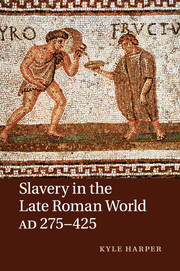Book contents
- Frontmatter
- Contents
- List of tables
- Acknowledgments
- PART I THE ECONOMY OF SLAVERY
- PART II THE MAKING OF HONORABLE SOCIETY
- Introduction
- 5 Semper timere: the aims and techniques of domination
- 6 Self, family, and community among slaves
- 7 Sex, status, and social reproduction
- 8 Mastery and the making of honor
- PART III THE IMPERIAL ORDER
- CONCLUSION
- APPENDIXES
- Bibliography
- Index
5 - Semper timere: the aims and techniques of domination
Published online by Cambridge University Press: 05 August 2011
- Frontmatter
- Contents
- List of tables
- Acknowledgments
- PART I THE ECONOMY OF SLAVERY
- PART II THE MAKING OF HONORABLE SOCIETY
- Introduction
- 5 Semper timere: the aims and techniques of domination
- 6 Self, family, and community among slaves
- 7 Sex, status, and social reproduction
- 8 Mastery and the making of honor
- PART III THE IMPERIAL ORDER
- CONCLUSION
- APPENDIXES
- Bibliography
- Index
Summary
THE MASTER–SLAVE RELATIONSHIP
Seeking a metaphor to describe the mysterious compound of love and wrath which God was capable of showing towards mankind, Lactantius found in the figure of the slave-owner an evocative parallel. “The master calls the good slave a friend and decorates him and puts him in charge of the domus and the familia and all the master's affairs, but the bad slave he punishes with cursing, lashes, nudity, hunger, thirst, chains. The one is an example to the others not to sin, and the other is an example to good behavior, so that some are coerced by fear, others driven by honor.” The use of the most horrifying terrors and the promise of such conspicuous rewards belonged on the same spectrum. The spectrum described by Lactantius was not merely conjured to serve his rhetorical purpose, for as we will see the Roman master was vested with an exceptionally broad range of powers to reward and to punish. This chapter is an exploration of that spectrum. It is an attempt to understand the techniques of domination in Roman society and to uncover the systemic forces promoting the use of particular techniques. We cannot accept, with Lactantius, that some slaves were simply “good,” others “bad.” Instead we want to discover the choices made by masters and slaves as they tried to maneuver towards their desired ends.
- Type
- Chapter
- Information
- Slavery in the Late Roman World, AD 275–425 , pp. 219 - 248Publisher: Cambridge University PressPrint publication year: 2011

